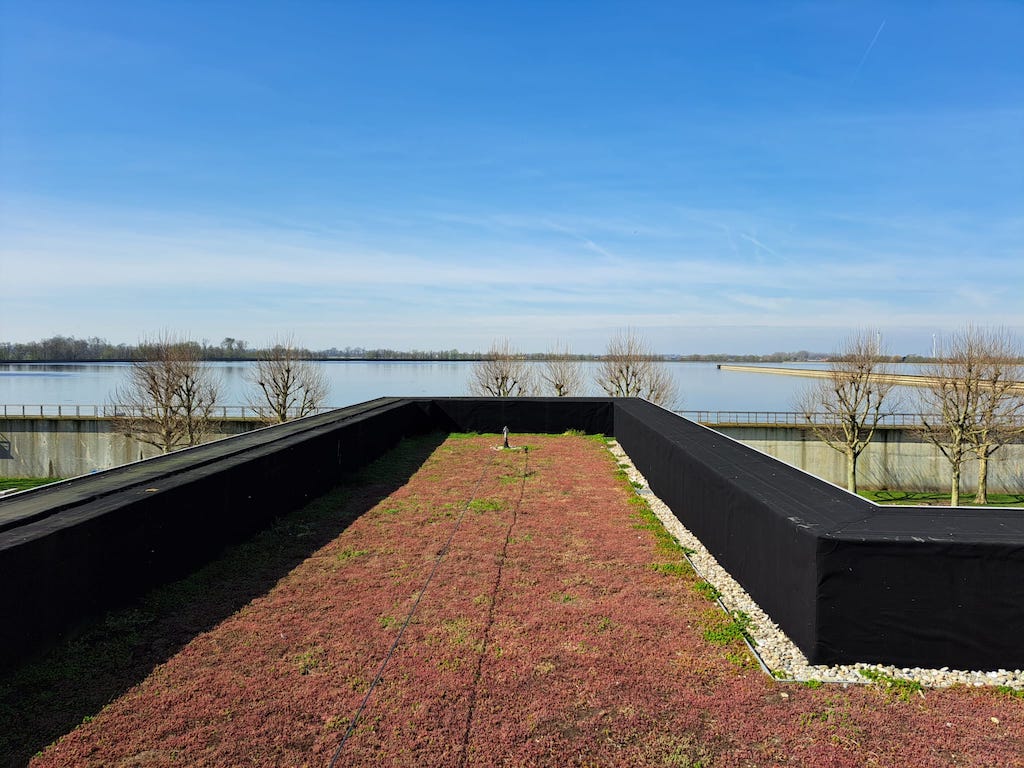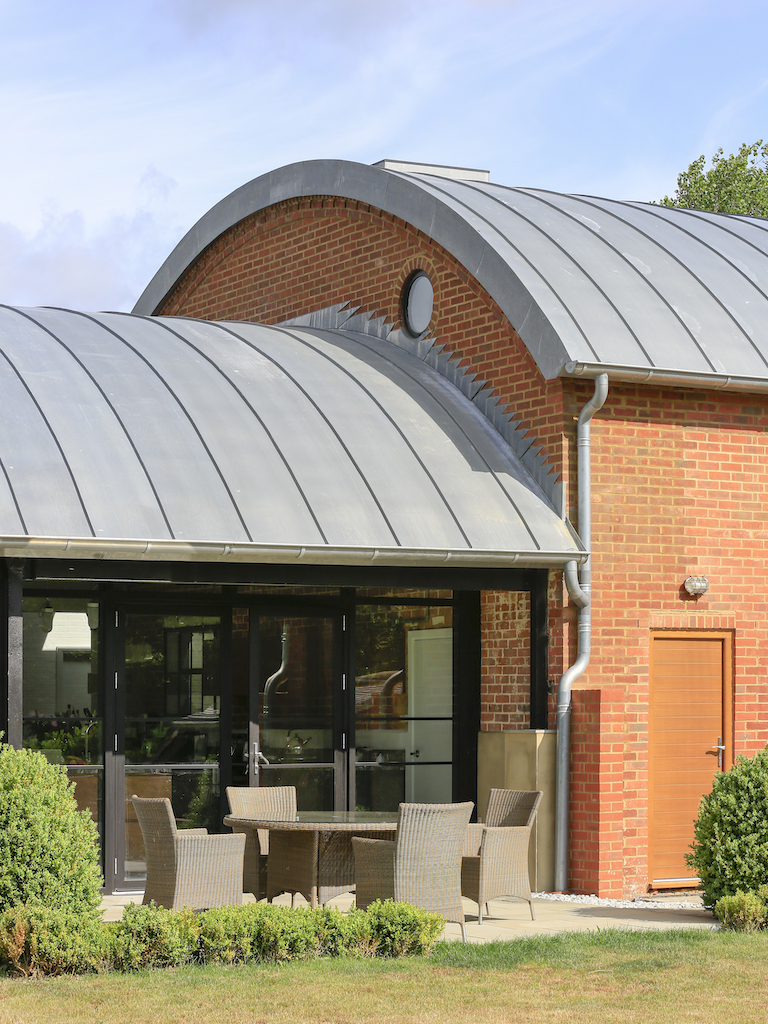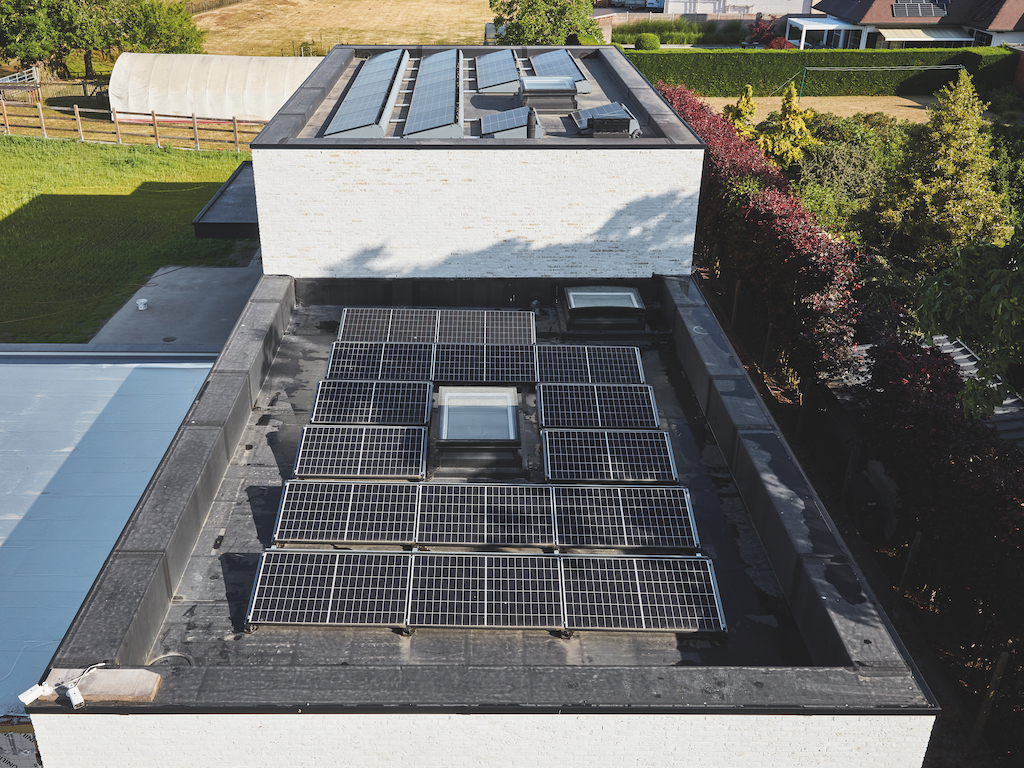Green and sustainable solutions
Exceptional lifespan
For sustainable construction longevity stands as a cornerstone principle, shaping the foundation of environmentally conscious building practices. Materials such as zinc and EPDM exemplify this with an exceptional lifespan that transcends generations. Their enduring lifespan not only minimizes the need for frequent replacements but also reduces resource consumption and waste generation, aligning seamlessly with the overarching objectives of green building initiatives.
Zinc protects itself against external corrosion by developing a patina that gives it an exceptional lifespan. This light grey patina takes between six months and two years to form, depending on the climate, the exposure of the site and the composition of the atmosphere. With an average corrosion rate of 1 µm/year, even very thin rolled zinc (0.7 mm) can achieve a service life of 70 to 100 years depending on the environment (60 years in an aggressive environment to over 100 years in a milder environment). Zinc continues to develop a protective layer throughout its life.
EPDM membranes have a recognised lifespan of more than 50 years. An outstanding example of the usefulness of this longevity can be found in Ukraine. To provide long-term protection for the steel structure around the Chernobyl nuclear power plant, the engineers overseeing the safety of the nuclear disaster site chose EPDM as the solution. Altogether, 12.000 m² of EPDM protects the outer insulation of the sarcophagus from ozone, UV and radiation.
Sustainable buildings
Environmental Product Declarations (EPD’s) play a crucial role in assessing the environmental quality of buildings. These declarations serve a dual purpose: transparently and reliably presenting the environmental impact of construction products, while also establishing the foundational data sources necessary for evaluating building environmental quality.
The assessment of Environmental Quality in Buildings (EQB) involves calculating the environmental effects of a building using a life cycle analysis principle, encompassing a multi-phase and multi-criteria approach.
Within this context, the availability of EPDs for our zinc and EPDM solutions is a key focus. Recognizing the significance of these declarations in sustainable construction, VM Building Solutions takes proactive steps:
Assessing the environmental profiles of key product families for building envelope applications within its offering.
Transparently and impartially presenting the results of these assessments using the standardised format of product environmental declarations.
By creating EPD’s for zinc and EPDM solutions, VM Building Solutions highlights its commitment to sustainable building practices, facilitating informed decision-making and promoting environmentally responsible construction initiatives. These efforts not only enhance the transparency of environmental information but also empower stakeholders to make conscious choices in building materials, ultimately contributing to the creation of greener and more sustainable built environments.
Sustainable benchmarks
In the pursuit of sustainable construction, certification frameworks like BREEAM®, LEED®, and HQE® serve as guiding principles, aiming to minimize the environmental impact of buildings while enhancing occupant well-being and overall quality of life.
- BREEAM® strives to limit a building's impact on its surroundings while simultaneously improving the quality of life for its users or occupants. Our VMZINC products offer numerous advantages that contribute to achieving BREEAM® certification for the buildings in which they are utilized. VMZINC solutions notably contribute to four key families of BREEAM® criteria.
- LEED®, known as a benchmark for sustainable construction, acknowledges the most energy-efficient and environmentally friendly buildings and assigns them a rating. Our VMZINC systems and Resitrix membranes possess various attributes that aid in obtaining LEED® certification for the buildings they inhabit (contribution to four families).
- The French HQE® assessment system aims to limit the environmental impacts of new or existing buildings while optimizing the health and comfort of occupants. VMZINC products boast numerous advantages that enable them to contribute to the environmental quality of buildings. VMZINC solutions align with the four objectives of the HQE® approach.
Green building applications
Zinc and EPDM solutions play pivotal roles in facilitating eco-friendly applications such as green roofs, solar panels and rainwater harvesting systems, aligning seamlessly with the principles of green construction.

Green roofs for urban biodiversity
Green roofs not only add a touch of nature to urban landscapes but also offer a lot of benefits. They provide insulation, mitigate water runoff and prolong the lifespan of roofs. A waterproof roof EPDM-membrane (like Resitrix® SK W full bond) serves as an ideal foundation for their installation.
Green roofs contribute significantly to improving air quality and fostering biodiversity. They play a significant rol in mitigating the urban heat island effect. By absorbing carbon dioxide and releasing oxygen, they help mitigate pollution and reduce smog, resulting in a healthier urban environment. Moreover, green roofs serve as habitats for various plant and insect species, promoting biodiversity and ecological balance.

Efficient water management with rainwater harvesting (blue roofs)
Rainwater harvesting offers an efficient solution for water conservation and management. EPDM-membranes enable smooth drainage of rainwater into storage tanks, reducing strain on drainage systems, minimizing flood risks and alleviating pressure on water treatment facilities. Harvested rainwater can be utilized for irrigation, sanitation, or industrial purposes, further enhancing sustainability and resource efficiency.
Additionally, zinc plays a crucial role in rainwater harvesting systems by providing durable and corrosion-resistant components such as gutters, downspouts, and piping. These zinc-based components ensure the effective collection and conveyance of rainwater from rooftops to storage tanks, preserving its quality for various applications. By integrating zinc elements into rainwater harvesting infrastructure, buildings not only optimize water management but also enhance their resilience and longevity in the face of environmental challenges.

Solar panels and reflective membranes (yellow roofs)
Solar panels installed on rooftops represent a significant investment in sustainable energy generation. To maximize their efficiency, it's crucial to pair them with materials that enhance their performance while promoting environmental responsibility. The longevity of EPDM-membranes surpasses that of solar panels, providing owners with assurance that roof sealing won't require frequent replacement. Moreover, particular membranes offered by VM Building Solutions can positively impact solar panel efficiency. White, ultra-reflective and modified EPDM membranes like Masterreflect reflect up to 75% of solar radiation. This reflective quality reduces the temperature above the roof surface by up to 25°C, creating a thermal barrier that enhances energy efficiency. When combined with solar panels, Masterreflect can boost their efficiency by up to 4%, further optimizing energy generation and utilization.